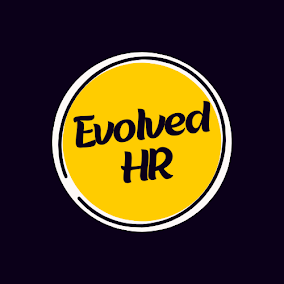Starting off a data-driven HR approach means understanding business goals and measuring human capital against them, with this necessitating collecting and analyzing different kinds of data sources.
 |
| Photo by Lukas |
Metrics can provide valuable insight when placed within context; that's why combining internal and external data sources is so essential.
1. Identify Your Key Performance Indicators (KPIs)
As an HR professional, you collect an enormous amount of data. However, it can be challenging to know how best to utilize it all; to make sense of all that information, HR data analytics are key tools.
HR data analytics involves using data to pinpoint causes and anticipate outcomes, helping to make more informed decisions and uncover areas for improvement in your business. By gathering and consolidating multiple sources of information, it offers a holistic view of everything happening within it - such as how different parts interact and identify areas for further enhancement.
To take full advantage of HR analytics, the first step should be identifying your key performance indicators (KPIs). KPIs serve as measurements that allow you to gauge whether you're on track towards meeting your goals - for instance, revenue per employee measures the total sum earned over a specific time period by employees in proportion.
Ideally, when selecting KPIs it's best to select those which accurately reflect aspects of your business over which you have some control. While economic trends might affect your workforce negatively, you can look at factors like recruitment costs or employee tenure as indicators of whether these metrics matter for your business.
2. Analyze Your Data
Human Resource analytics involves collecting and analyzing data. Depending on the goals and questions of your department, various forms of analysis exist that can provide you with all of the answers you require.
Descriptive analytics: Descriptive analytics use raw data to detect trends, patterns or inconsistencies within it. If employee turnover is excessively high, descriptive analytics can identify potential causes so you can take measures to address it.
Diagnostic analytics: Diagnostic analytics provide more effective data analysis by pinpointing the root causes of issues. They reveal discrepancies by considering internal and external influences that might be causing it - for instance, high turnover might be caused by inadequate recruiting practices - so predictive analysis provides precise recommendations to address it.
Predictive analytics: This form of analysis transforms historical data and predicts future outcomes, offering your organization insights that they otherwise wouldn't gain access to.
One of the major hurdles HR teams face when using analytics tools is internal resistance to using them. Employees may question why their performance is being tracked, potentially violating their privacy. To address this, it's critical that C-suite understand why HR analytics are necessary to drive business growth and enhance processes.
3. Make Decisions Based on Data
HR departments have become a vital component of businesses and, to stay relevant, must use data to inform decisions. To this end, HR teams must understand which data is required and how best to collect it.
Establishing a people analytics team is the cornerstone of this process, which necessitates taking the necessary time and care in choosing appropriate analytics tools, redesigning internal processes to efficiently collect the required information and informing all relevant stakeholders of its progress.
Establish a data strategy with clear and attainable goals in mind. This will allow you to better determine what information is needed, how it should be collected and presented, as well as making data-driven decisions that lead to tangible and successful business results.
Make the most out of your HR data by employing predictive models to predict future outcomes and show management how new HR initiatives may influence key metrics like absenteeism or turnover rates. This approach offers great potential.
Your people analytics strategy should draw upon various sources of data such as employee surveys, focus groups and your HR software stack's own output. Furthermore, external industry and other business-specific sources may be helpful as well as speaking with leaders from other departments about any queries that aren't being met by existing information.
4. Share Your Results
HR analytics is the practice of gathering and analyzing employee-related data in order to gain insights. Once collected, this data can then be used by companies as a whole for decisions such as decreasing employee turnover or increasing sales through training programs.
HR professionals need to fully grasp their organization's existing processes and business goals before selecting KPIs that will track progress towards these objectives - be they as simple as tracking absenteeism or more complicated like identifying high-performing employees for promotion. To use data analytics effectively, HR professionals need to be familiar with its current state as well as future goals of using analytics in the organization.
Data analytics come from both internal systems and external data sets, so to get the best out of these analyses it's vital to have a data platform which centralizes all this information into one source of truth, providing for more thorough and precise analyses of your data.
Thus, HR leaders can easily identify ways to enhance both their departments and the entire business as a whole. From reducing recruitment costs, increasing retention or improving performance - HR leaders can track progress and make informed decisions using data provided. Their efforts could ultimately result in improved business outcomes for their organizations.





.jpg)

No comments:
Post a Comment